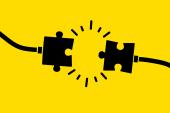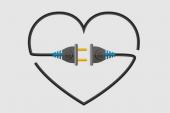EHRA Provides Practical, Hands-on Advice for Conduction System Pacing
The statement focuses on techniques for His-bundle and LBB pacing that have emerged as alternative strategy to RV pacing.

BARCELONA, Spain—The European Heart Rhythm Society (EHRA) has released a new consensus statement on conduction system pacing (CSP), which includes both His-bundle and left bundle branch (LBB) pacing, with the aim of standardizing the implantation technique and providing some direction for physicians looking to perform the procedure.
The statement, which has been in the works for the past year, is intended as a practical, “hands-on” document for implanters looking for up-to-date guidance, according to lead author Haran Burri, MD (University Hospital of Geneva, Switzerland). In recent years, there’s been an increase in CSP implantation, which has emerged as an alternative to RV pacing, as the procedure moves more into mainstream clinical practice.
“Not at all centers, obviously, but in many centers, such as mine,” said Burri last week at the EHRA 2023 congress. “Even a patient who comes in with complete [atrioventricular] block in the ER who needs pacing will get conduction system pacing. It’s already a reality and it has been so for a number of years. There’s also growing evidence for safety and efficacy in thousands of patients. The [data] are really growing very fast.”
With CSP, the heart’s conduction system is directly activated with the pacing stimulus at the level of the His bundle or LBB. While cardiac resynchronization therapy (CRT) with biventricular pacing is the cornerstone of treatment for patients with cardiomyopathy, heart failure, and ventricular dyssynchrony, roughly 30% of patients don’t respond to treatment. CSP has arisen as a physiologic alternative to CRT, with studies showing that it can achieve resynchronized ventricular activation.
In 2019, European Society of Cardiology (ESC) guidelines introduced His-bundle pacing as an option for the treatment of supraventricular tachycardia (SVT). More recently, the ESC pacing guidelines were expanded to include CSP for the treatment of AV block and as alternative to patients who failed conventional CRT.
“I would say that this is now accepted therapy, although the indications are quite conservative due to the limited evidence that we had back then,” said Burri.
The EHRA consensus statement, which is endorsed by the Asia Pacific Heart Rhythm Society, Canadian Heart Rhythm Society, and Latin American Heart Rhythm Society, was published simultaneously in Europace. It provides more than 120 references, 30 figures, and 11 embedded video tutorials, which include cases, to help physicians perform CSP safely and effectively.
“We tried to do this in a structured, step-by-step manner so that there’s a framework for doing this properly,” said Burri. The statement does not provide guidance on when to perform CSP, he added, saying that indications are the domain of the current clinical guidelines.
The consensus document outlines how to recognize ECG confirmation of His bundle and LBB capture, which is relatively clear for His bundle pacing but is more complicated for LBB pacing, said Burri. It also provides information on how to successfully implant the pacing leads and what to do should complications arise. In addition to the 29-page consensus statement, the writing group published a shorter executive summary of their recommendations.
Michael O’Riordan is the Managing Editor for TCTMD. He completed his undergraduate degrees at Queen’s University in Kingston, ON, and…
Read Full BioSources
Burri H, Jastrzebski M, Cano O, et al. EHRA clinical consensus statement on conduction system pacing implantation: endorsed by the Asia Pacific Heart Rhythm Society (APHRS), Canadian Heart Rhythm Society (CHRS), and Latin American Heart Rhythm Society. Europace. 2023;25:1208-1236.
Disclosures
- Burri reports institutional research, fellowship support, and speaking honoraria from Abbott, Biotronik, Boston Scientific, Medtronic, and Microport.





Comments